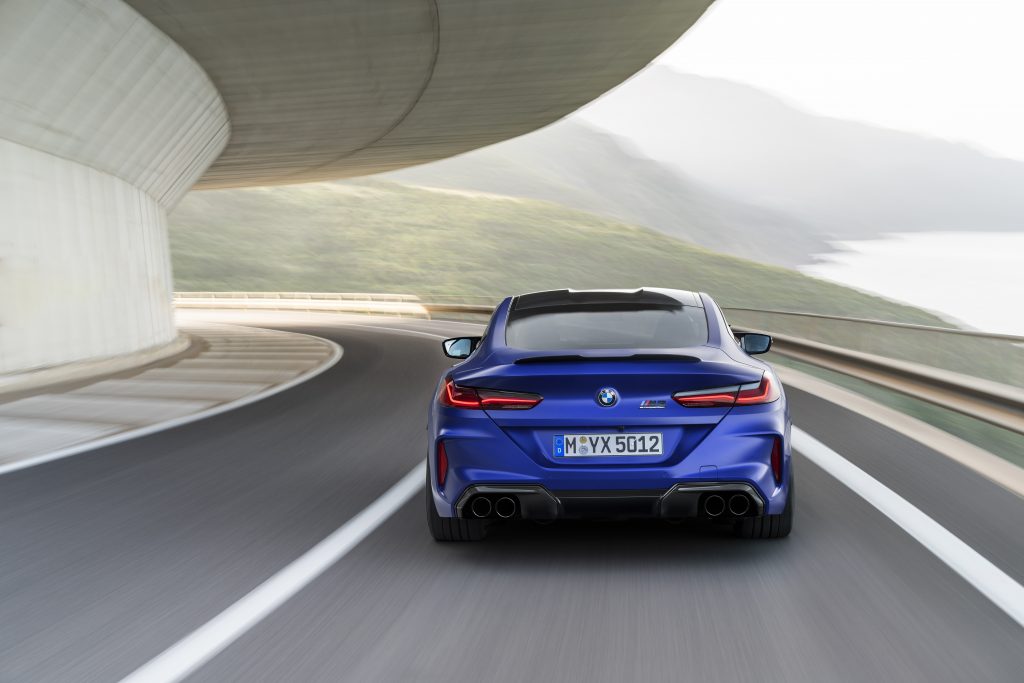Test Drive: 2015 BMW i8
The company’s first-ever plug-in hybrid is a radically innovative sportscar that could very well change the entire industry

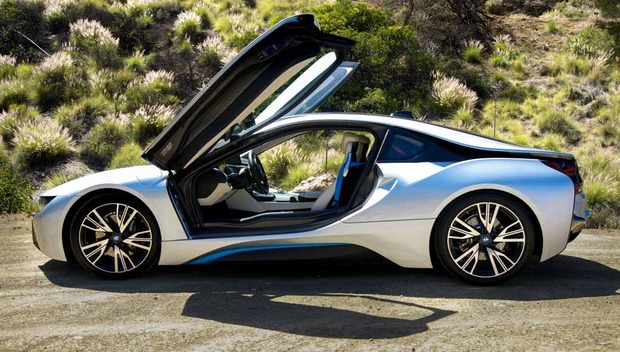
Each year, car manufacturers across the globe release 350 or so new models. The vast majority are annual updates to models past—new iterations that are a little more powerful, a little more fuel-efficient and feature smarter tech and nav systems. Seldom does a new model launch that is a radically innovative departure from those that have come before. However, the BMW i8—which we put through its paces over the weekend in Los Angeles—is exactly that. It’s a freak of technology. A four-wheeled disrupter. This carbon-fiber-bodied-sportscar has the potential to forever change the way automobiles are built.
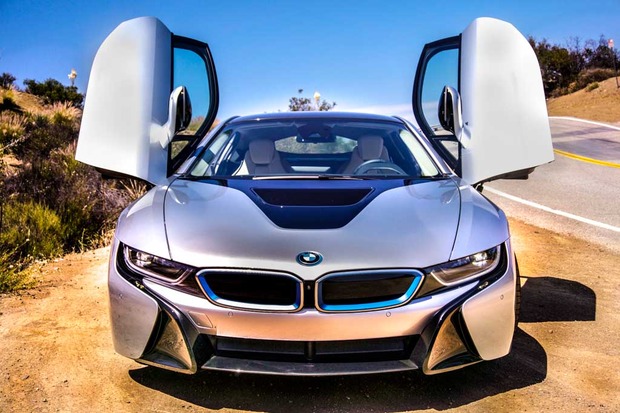
BMW launched the i Series brand last year with the all-electric i3, a decidedly un-sporty hatchback that earned the distinction of being the first zero-emissions Bimmer. Now comes the seriously sporty i8, the company’s first-ever plug-in hybrid, to raise the stakes and prove the new i brand has real range.
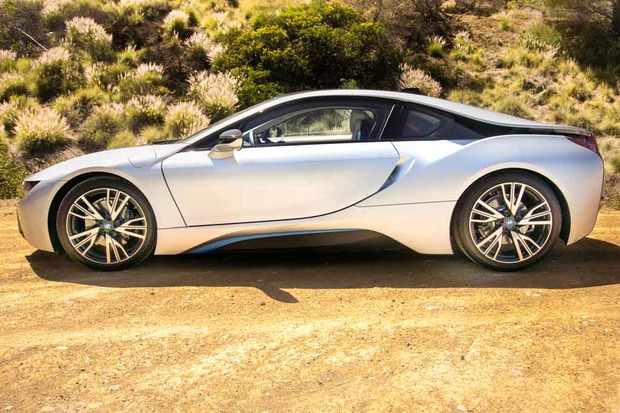
The i8’s powertrain is divided between the coupe’s two axles and draws on both electrons and gasoline: a 7.1 kWh battery pack and electric motor power the front while a turbocharged three-cylinder engine see to the rear. With a total combined output of 357 horsepower and 420-lb-ft of torque, the all-wheel drive coupe hits 60 mph in 4.2 seconds, nearly as fast as the latest M3 and M4. (The i8’s top speed is electronically limited to 155 mph.)
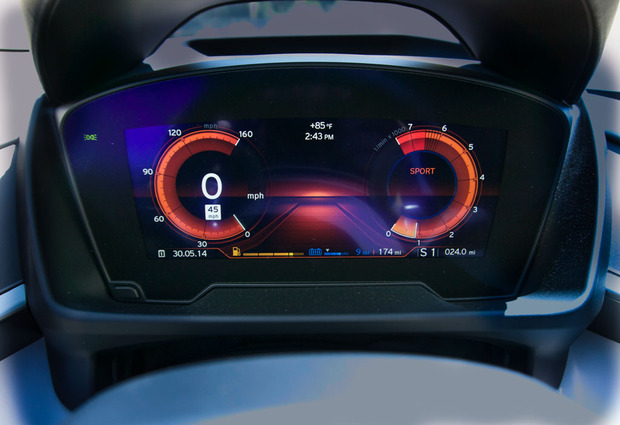
Impressive as those figures are, the i8 earns its game-changing status by way of its materials and manufacturing process. The 2+2 is the first mass-produced car to feature a manufactured carbon-fiber reinforced plastic (CFRP) shell. Carbon-fiber bodies aren’t so uncommon for low-volume hypercars that cost millions (Ferrari’s LaFerrari and McLaren’s P1, for examples), but they are unheard of for something with a MSRP of $135,700. Until now.
In Sport Mode, the turbocharged engine spits to life and the i8 becomes an electric-boosted beast.
BMW has invested heavily (read: billions) in the technology platform behind the i Series. The company, through a joint venture with a manufacturer in Washington state, will become the world’s biggest developer of carbon fiber. The Munich-based company—with its assembly plant in Leipzig—choosing a manufacturer in Washington might seem illogical, however carbon fiber is not only incredibly lightweight but is also an incredibly energy-intensive material to produce, and the Evergreen State happens to be flush with hydroelectric power.
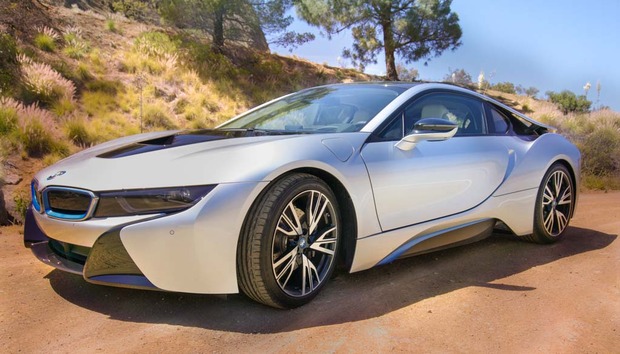
The story of innovative materials doesn’t end with carbon fiber. The front and rear bumpers are made of thermoplastics. The steeply-raked rear window is made of ultra-tough Gorilla Glass, more commonly found on smartphone screens. And something you can’t see, but which is no less critical is all the glue. BMW’s Zaha Hadid–designed central factory in Leipzig (where the i8 and i3 are assembled) is eerily quiet, with all the robots gluing rather than welding the carbon-fiber shell together. (Staying with the theme of sustainability, the assembly plant is powered in part by wind turbines.) And up top, the i8’s low-slung roof is constructed of recycled carbon fiber.
As for design, BMW devised an altogether new language for the i8. It is a sculpted and incredibly weight conscious vehicle, with even wires and bulbs put on the scale. Design decisions were made based on function, not just looks. Gone is the signature BMW Hofmeister kink; replaced by a pair of stream flow wings that provide stability at high speeds. The hood vent helps with cooling, as do the open kidney grills. And the front apron vents create an air curtain around the 20-inch, shark teeth-shaped wheels, which reduces drag.
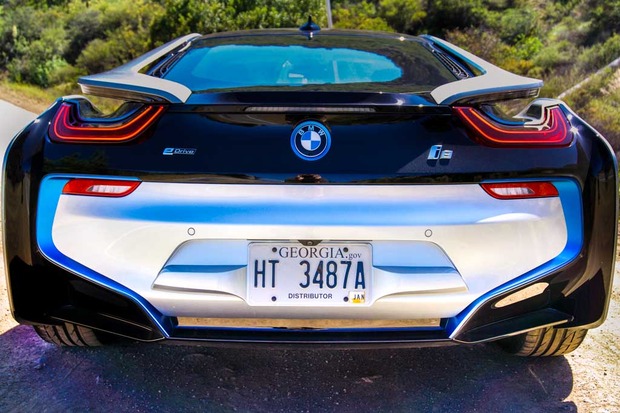
The question from all car enthusiasts is whether or not a plug-in hybrid can live up to BMW’s creed of “the ultimate driving machine.” The answer is yes, and no. The i8 drives like two dramatically different cars. In eMode, it is a highly efficient EV well-suited to a daily commute between 20 and 30 miles with a top speed of 75 mph. Driving through Century City on battery power alone the i8’s electric motor whined ever so subtly, drawing looks from fellow drivers, particularly those of M3s and Porsches.
In Sport Mode, however, the turbocharged engine spits to life and the i8 becomes an electric-boosted beast. The three-cylinder engine produces a singular sound, helped by a bit of savvy acoustic engineering—in Sport Mode, the Harmon Kardon speakers amplify the 1.5-liter engine’s noise throughout the cabin. The internal-combustion crackling is uncanny for a car that, based on EU figures, gets 94 miles to the gallon.
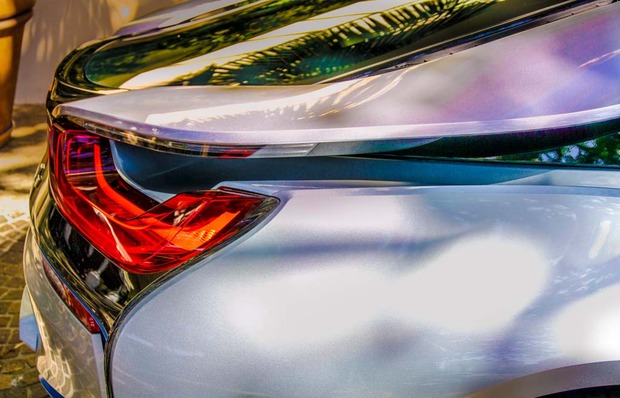
Up in the Malibu hills, the i8 more than proved its rightful claim to the Bimmer badge. On the famous stretch of Mulholland Highway known as The Snake, the coupe carved through the switchbacks with supreme confidence. This particular stretch of road is like driving your signature made of sun-blasted asphalt. My co-driver, gripping the scissor door with both hands, didn’t make it through The Snake before being overtaken by queasiness. He blamed the salmon he’d had for lunch, but we both knew it was a result of the car’s superb weight distribution and handling. Chalk another one up for The Snake and one for the i8.
Photos by Michael Mraz

